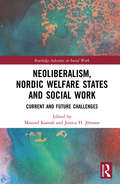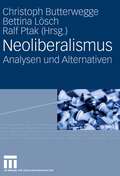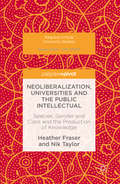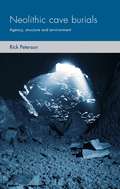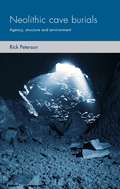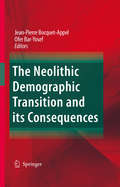- Table View
- List View
Neoliberalism, Nordic Welfare States and Social Work: Current and Future Challenges (Routledge Advances in Social Work)
by Masoud Kamali Jessica H. JönssonHow have three decades of neoliberalism affected the Nordic welfare states as well as the organisation, education and practices of social work in those countries? During recent decades the welfare states of Denmark, Finland, Norway and Sweden have gone through dramatic changes infl uenced by the political triumph of neoliberalism. This has led to both the electoral success of extreme right and mainstream neoliberal parties, and to the neoliberal ideological transformations of social democratic parties. The neoliberal doctrine of making governance cheaper has thus been made the focus of governance and has led to increased marginalisation and social problems. This is the first book to comparatively explore the role of neoliberal reforms on social work and social policy across the Nordic welfare states. The richly theoretical and empirical chapters explore and illustrate the consequences of the dominance of neoliberal policies and provide an analysis of the effects of globalisation, glocalisation, welfare nationalism, symbolic violence and forced migration. The book provides valuable insights into the shortcomings of retreating welfare states in a time of increasing glocal social problems. Neoliberalism, Nordic Welfare States and Social Work should be considered essential reading for critical social work education. Students, scholars, educators and researchers of Nordic countries and beyond have much to learn from this book.
Neoliberalism, Personhood, and Postsocialism: Enterprising Selves in Changing Economies
by Nicolette MakovickyDespite a growing literature debating the consequences of neo-liberal political and economic policy in the former Eastern bloc, the idea of neo-liberal personhood has so far received limited attention from scholars of the region. Presenting a range of ethnographic studies, this book lays the groundwork for a new disciplinary agenda by critically examining novel technologies of self-government which have appeared in the wake of political and economic liberalization. Neoliberalism, Personhood, and Postsocialism explores the formation of subjectivities in newly marketized or marketizing societies across the former Eastern Bloc, documenting the rise of the neo-liberal discourse of the ’enterprising’ self in government policy, corporate management and education, as well as examining the shifts in forms of capital amongst marginal capitalists and entrepreneurs working in the grey zone between the formal and informal economies. A rich investigation of the tools of neo-liberal governance and the responses of entrepreneurs and families in changing societies, this book reveals the full complexity of the relationship between historically and socially embedded economic practices, and the increasing influence of libertarian political and economic thought on public policy, institutional reform, and civil society initiatives. As such, it will appeal to anthropologists, sociologists and geographers with interests in political discourse, identity, entrepreneurship and organizations in post-socialist societies.
Neoliberalism, Personhood, and Postsocialism: Enterprising Selves in Changing Economies
by Nicolette MakovickyDespite a growing literature debating the consequences of neo-liberal political and economic policy in the former Eastern bloc, the idea of neo-liberal personhood has so far received limited attention from scholars of the region. Presenting a range of ethnographic studies, this book lays the groundwork for a new disciplinary agenda by critically examining novel technologies of self-government which have appeared in the wake of political and economic liberalization. Neoliberalism, Personhood, and Postsocialism explores the formation of subjectivities in newly marketized or marketizing societies across the former Eastern Bloc, documenting the rise of the neo-liberal discourse of the ’enterprising’ self in government policy, corporate management and education, as well as examining the shifts in forms of capital amongst marginal capitalists and entrepreneurs working in the grey zone between the formal and informal economies. A rich investigation of the tools of neo-liberal governance and the responses of entrepreneurs and families in changing societies, this book reveals the full complexity of the relationship between historically and socially embedded economic practices, and the increasing influence of libertarian political and economic thought on public policy, institutional reform, and civil society initiatives. As such, it will appeal to anthropologists, sociologists and geographers with interests in political discourse, identity, entrepreneurship and organizations in post-socialist societies.
Neoliberalismus: Analysen und Alternativen
by Christoph Butterwegge Bettina Lösch Ralf PtakMit dieser Publikation werden erstmals verschiedene Ansätze der Neoliberalismusforschung im deutschsprachigen Raum zusammengeführt und gebündelt. In 21 Beiträgen setzen sich Autor(inn)en verschiedener Fachdisziplinen mit grundlegenden Fragen des neoliberalen Projekts, den Gründen seiner Wirkungsmächtigkeit, der widersprüchlichen Rolle des Staates und den Voraussetzungen und Ansätzen für eine postneoliberale Agenda auseinander. Diese Analyse soll dazu beitragen, die Diskussion um Alternativen auf einer fundierten Grundlage fortzuentwickeln. Das Buch richtet sich gleichermaßen an ein wissenschaftliches Publikum wie auch an Leser/innen, die den Gegenstand des Neoliberalismus durchdringen wollen, um Orientierung und Handlungsfähigkeit für die gesellschaftliche Praxis zu erlangen.
Neoliberalization: States, Networks, Peoples (Antipode Book Series #30)
by Kim England Kevin WardThe book is an analysis of cultural, social as well as political economic expressions of neoliberalization and argues for an appreciation of the relational geographies of neoliberalization. In-depth empirical research spanning a variety of world regions A range of topics including homelessness, comparative politics, economic development and social policy Reviews how neoliberalism is enacted as a way to highlight the complexity and contingency of this economic model Engages in debates within anthropology, gender studies, geography, health studies, international studies, planning, political science and sociology
Neoliberalization: States, Networks, Peoples (Antipode Book Series)
by Kim England Kevin WardThe book is an analysis of cultural, social as well as political economic expressions of neoliberalization and argues for an appreciation of the relational geographies of neoliberalization. In-depth empirical research spanning a variety of world regions A range of topics including homelessness, comparative politics, economic development and social policy Reviews how neoliberalism is enacted as a way to highlight the complexity and contingency of this economic model Engages in debates within anthropology, gender studies, geography, health studies, international studies, planning, political science and sociology
“Neoliberalization” as Betrayal: State, Feminism, and a Women’s Education Program in India (Comparative Feminist Studies)
by S. SharmaThis book is concerned with the three-way relationship between neoliberalism, women's education, and the spatialization of the state, and analyses this through an ethnography lens of women's education programs in India.
Neoliberalization, Universities and the Public Intellectual: Species, Gender and Class and the Production of Knowledge (Palgrave Critical University Studies)
by Heather Fraser Nik TaylorThis book employs an an intersectional feminist approach to highlight how research and teaching agendas are being skewed by commercialized, corporatized and commodified values and assumptions implicit in the neoliberalization of the academy. The authors combine 50 years of academic experience and focus on species, gender and class as they document the hazardous consequences of seeing people as instruments and knowledge as a form of capital. Personal-political examples are provided to illustrate some of the challenges but also opportunities facing activist scholars trying to resist neoliberalism. Heartfelt, frank, and unashamedly emotional, the book is a rallying cry for academics to defend their role as public intellectuals, to work together with communities, including those most negatively affected by neoliberalism and the corportatization of knowledge.
Neolithic
by Susan McCarterThis excellent introductory textbook describes and explains the origins of modern culture– the dawn of agriculture in the Neolithic area. Written in an easy-to-read style, this lively and engaging book familiarises the reader with essential archaeological and genetic terms and concepts, explores the latest evidence from scientific analyses as varied as deep sea coring, pollen identification, radiometric dating and DNA research, condensing them into an up-to-date academic account, specifically written to be clear even the novice reader. Focusing primarily on sites in southwest Asia, Neolithic addresses questions such as: Which plants and animals were the first to be domesticated, and how? How did life change when people began farming? What were the first villages like? What do we know about the social, political and religious life of these newly founded societies? What happened to human health as a result of the Neolithic Revolution? Lavishly illustrated with almost a hundred images, this enjoyable book is an ideal introduction both for students of archaeology and for general readers interested in our past.
Neolithic
by Susan McCarterThis excellent introductory textbook describes and explains the origins of modern culture– the dawn of agriculture in the Neolithic area. Written in an easy-to-read style, this lively and engaging book familiarises the reader with essential archaeological and genetic terms and concepts, explores the latest evidence from scientific analyses as varied as deep sea coring, pollen identification, radiometric dating and DNA research, condensing them into an up-to-date academic account, specifically written to be clear even the novice reader. Focusing primarily on sites in southwest Asia, Neolithic addresses questions such as: Which plants and animals were the first to be domesticated, and how? How did life change when people began farming? What were the first villages like? What do we know about the social, political and religious life of these newly founded societies? What happened to human health as a result of the Neolithic Revolution? Lavishly illustrated with almost a hundred images, this enjoyable book is an ideal introduction both for students of archaeology and for general readers interested in our past.
A Neolithic and Bronze Age Landscape in Northamptonshire: The Raunds Area Project (English Heritage)
by Jan Harding Frances HealyThe Raunds Area Project investigated more than 20 Neolithic and Bronze Age monuments in the Nene Valley. From c 5000 BC to the early 1st millennium cal BC a succession of ritual mounds and burial mounds were built as settlement along the valley sides increased and woodland was cleared. Starting as a regular stopping-place for flint knapping and domestic tasks, first the Long Mound, and then Long Barrow, the north part of the Turf Mound and the Avenue were built in the 5th millennium BC. With the addition of the Long Enclosure, the Causewayed Ring Ditch, and the Southern Enclosure, there was a chain of five or six diverse monuments stretched along the river bank by c 3000 cal BC. Later, a timber platform, the Riverside Structure, was built and the focus of ceremonial activity shifted to the Cotton ‘Henge’, two concentric ditches on the occupied valley side. From c 2200 cal BC monument building accelerated and included the Segmented Ditch Circle and at least 20 round barrows, almost all containing burials, at first inhumations, then cremations down to c 1000 cal BC, by which time two overlapping systems of paddocks and droveways had been laid out. Finally, the terrace began to be settled when these had gone out of use, in the early 1st millennium cal BC.
A Neolithic and Bronze Age Landscape in Northamptonshire: The Raunds Area Project (English Heritage)
by Jan Harding Frances HealyThe Raunds Area Project investigated more than 20 Neolithic and Bronze Age monuments in the Nene Valley. This volume, on DVD, is the detailed monument and landscape analysis, environmental specialist reports, and finds reports catalogues (includes tables of data and interpretations and finds drawings).
Neolithic Britain: The Transformation of Social Worlds
by Keith Ray Julian ThomasThe Neolithic in Britain was a period of fundamental change: human communities were transformed, collectively owning domesticated plants and animals, and inhabiting a richer world of material things: timber houses and halls, pottery vessels, polished flint and stone axes, and massive monuments of earth and stone. Equally important was the development of a suite of new social practices, with an emphasis on descent, continuity and inheritance. These innovations set in train social processes that culminated with the construction of Stonehenge, the most remarkable surviving structure from prehistoric Europe. Neolithic Britain provides an up-to-date, concise introduction to the period of British prehistory from c. 4000-2200 BCE. Written on the basis of a new appreciation of the chronology of the period, the result reflects both on the way that archaeologists write narratives of the Neolithic, and how Neolithic people constructed histories of their own. Incorporating new insights from the extraordinary pace of archaeological discoveries in recent years, a world emerges which is unfamiliar, complex and challenging, and yet played a decisive role in forging the landscape of contemporary Britain. Important recent developments have resulted in a dual realisation: firstly, highly focused research into individual site chronologies can indicate precise and particular time narratives; and secondly, this new awareness of time implies original insights about the fabric of Neolithic society, embracing matters of inheritance, kinship and social ties, and the 'descent' of cultural practices. Moreover, our understanding of Neolithic society has been radically affected by individual discoveries and investigative projects, whether in the Stonehenge area, on mainland Orkney, or in less well-known localities across the British Isles. The new perspective provided in this volume stems from a greater awareness of the ways in which unfolding events and transformations in societies depend upon the changing relations between individuals and groups, mediated by objects and architecture. This concise panorama into Neolithic Britain offers new conclusions and an academically-stimulating but accessible overview. It covers key material and social developments, and reflects on the nature of cultural practices, tradition, genealogy, and society across nearly two millennia.
Neolithic Britain: The Transformation of Social Worlds
by Julian Thomas Keith RayThe Neolithic in Britain was a period of fundamental change: human communities were transformed, collectively owning domesticated plants and animals, and inhabiting a richer world of material things: timber houses and halls, pottery vessels, polished flint and stone axes, and massive monuments of earth and stone. Equally important was the development of a suite of new social practices, with an emphasis on descent, continuity and inheritance. These innovations set in train social processes that culminated with the construction of Stonehenge, the most remarkable surviving structure from prehistoric Europe. Neolithic Britain provides an up-to-date, concise introduction to the period of British prehistory from c. 4000-2200 BCE. Written on the basis of a new appreciation of the chronology of the period, the result reflects both on the way that archaeologists write narratives of the Neolithic, and how Neolithic people constructed histories of their own. Incorporating new insights from the extraordinary pace of archaeological discoveries in recent years, a world emerges which is unfamiliar, complex and challenging, and yet played a decisive role in forging the landscape of contemporary Britain. Important recent developments have resulted in a dual realisation: firstly, highly focused research into individual site chronologies can indicate precise and particular time narratives; and secondly, this new awareness of time implies original insights about the fabric of Neolithic society, embracing matters of inheritance, kinship and social ties, and the 'descent' of cultural practices. Moreover, our understanding of Neolithic society has been radically affected by individual discoveries and investigative projects, whether in the Stonehenge area, on mainland Orkney, or in less well-known localities across the British Isles. The new perspective provided in this volume stems from a greater awareness of the ways in which unfolding events and transformations in societies depend upon the changing relations between individuals and groups, mediated by objects and architecture. This concise panorama into Neolithic Britain offers new conclusions and an academically-stimulating but accessible overview. It covers key material and social developments, and reflects on the nature of cultural practices, tradition, genealogy, and society across nearly two millennia.
Neolithic cave burials: Agency, structure and environment (Social Archaeology and Material Worlds)
by Rick PetersonThis is the first book-length treatment of Neolithic burial in Britain to focus primarily on cave evidence. It interprets human remains from forty-eight caves and compares them to what we know of Neolithic collective burial elsewhere in Britain and Europe. It reviews the archaeology of these cave burials and treats them as important evidence for the study of mortuary practice. Drawing on evidence from archaeology, anthropology, osteology and cave science, the book demonstrates that cave burial was one of the earliest elements of the British Neolithic. It also shows that Early Neolithic cave-burial practice was highly varied, with many similarities to other burial rites. However, by the Middle Neolithic, a funerary practice which was specific to caves had developed.
Neolithic cave burials: Agency, structure and environment (Social Archaeology and Material Worlds)
by Rick PetersonThis is the first book-length treatment of Neolithic burial in Britain to focus primarily on cave evidence. It interprets human remains from forty-eight caves and compares them to what we know of Neolithic collective burial elsewhere in Britain and Europe. It reviews the archaeology of these cave burials and treats them as important evidence for the study of mortuary practice. Drawing on evidence from archaeology, anthropology, osteology and cave science, the book demonstrates that cave burial was one of the earliest elements of the British Neolithic. It also shows that Early Neolithic cave-burial practice was highly varied, with many similarities to other burial rites. However, by the Middle Neolithic, a funerary practice which was specific to caves had developed.
The Neolithic Demographic Transition and its Consequences
by Jean-Pierre Bocquet-Appel Ofer Bar-YosefThe transition from hunting and gathering to farming – the Neolithic Revolution – was one of the most signi cant cultural processes in human history that forever changed the face of humanity. Natu an communities (15,100–12,000Cal BP) (all dates in this chapter are calibrated before present) planted the seeds of change, and the Pre-Pottery Neolithic (PPN) (ca. 12,000–ca. 8,350Cal BP) people, were the rst to establish farming communities. The revolution was not fully realized until quite late in the PPN and later in the Pottery Neolithic (PN) period. We would like to ask some questions and comment on a few aspects emphas- ing the linkage between biological and cultural developments during the Neolithic Revolution. The biological issues addressed in this chapter are as follows: × Is there a demographic change from the Natu an to the Neolithic? × Is there a change in the overall health of the Neolithic populations compared to the Natu an? × Is there a change in the diet and how is it expressed? × Is there a change in the physical burden/stress people had to bear with? × Is there a change in intra- and inter-community rates of violent encounters? From the cultural perspective the leading questions will be: × What was the change in the economy and when was it fully realized? × Is there a change in settlement patterns and site nature and organization from Natu an to Neolithic? × Is there a change in human activities and division of labor?
Neolithic Farming in Central Europe: An Archaeobotanical Study of Crop Husbandry Practices
by Amy BogaardNeolithic Farming in Central Europe examines the nature of the earliest crop cultivation, a subject that illuminates the lives of Neolithic farming families and the day-to-day reality of the transition from hunting and gathering to farming. Debate surrounding the nature of crop husbandry in Neolithic central Europe has focussed on the permanence of cultivation, its intensity and its seasonality: variables that carry different implications for Neolithic society. Amy Bogaard reviews the archaeological evidence for four major competing models of Neolithic crop husbandry - shifting cultivation, extensive plough cultivation, floodplain cultivation and intensive garden cultivation - and evaluates charred crop and weed assemblages. Her conclusions identify the most appropriate model of cultivation, and highlight the consequences of these agricultural practices for our understanding of Neolithic societies in central Europe.
Neolithic Farming in Central Europe: An Archaeobotanical Study of Crop Husbandry Practices
by Amy BogaardNeolithic Farming in Central Europe examines the nature of the earliest crop cultivation, a subject that illuminates the lives of Neolithic farming families and the day-to-day reality of the transition from hunting and gathering to farming. Debate surrounding the nature of crop husbandry in Neolithic central Europe has focussed on the permanence of cultivation, its intensity and its seasonality: variables that carry different implications for Neolithic society. Amy Bogaard reviews the archaeological evidence for four major competing models of Neolithic crop husbandry - shifting cultivation, extensive plough cultivation, floodplain cultivation and intensive garden cultivation - and evaluates charred crop and weed assemblages. Her conclusions identify the most appropriate model of cultivation, and highlight the consequences of these agricultural practices for our understanding of Neolithic societies in central Europe.
The Neolithic Flint Mines of England (English Heritage)
by Martyn Barber David Field Peter ToppingOnly rarely in Europe do the surface remains of Neolithic flint mines remain so dramatically for all to see as those located along the South Downs and in the Breckland of England. Even within England they represent a diminishing resource and only ten sites have been recorded with any certainty. As examples of our earliest industrial heritage they represent archaeological sites of the first importance and have a special part to play in the history of technology. However, despite a lengthy history of archaeological investigation, they have rarely been considered nationally as a class of monument. Although some sites such as Grime's Graves are well known through excavation campaigns, others are known only through obscure articles and unpublished archival material. Many of those that survive as earthworks or cropmarks have never been surveyed previously or accurately planned. Consequently, English Heritage has compiled detailed plans of the surface areas of all of the known flint mines and investigated the sites of other potential examples. Using a combination of field survey, aerial photography and archival research, this volume looks at each site in its own right as a major and important complex and - for the first time - offers a synthesis of the evidence to date.
The Neolithic of Britain and Ireland
by Vicki CummingsThe Neolithic of Britain and Ireland provides a synthesis of this dynamic period of prehistory from the end of the Mesolithic through to the early Beaker period. Drawing on new excavations and the application of new scientific approaches to data from this period, this book considers both life and death in the Neolithic. It offers a clear and concise introduction to this period but with an emphasis on the wider and on-going research questions. It is an important text for students new to the study of this period of prehistory as well as acting as a reference for students and scholars already researching this area. The book begins by considering the Mesolithic prelude, specifically the millennium prior to the start of the Neolithic in Britain and Ireland. It then goes on to consider what life was like for people at the time, alongside the monumental record and how people treated the dead. This is presented chronologically, with separate chapters on the early Neolithic, middle Neolithic, late Neolithic and early Beaker periods. Finally it considers future research priorities for the study of the Neolithic.
The Neolithic of Britain and Ireland
by Vicki CummingsThe Neolithic of Britain and Ireland provides a synthesis of this dynamic period of prehistory from the end of the Mesolithic through to the early Beaker period. Drawing on new excavations and the application of new scientific approaches to data from this period, this book considers both life and death in the Neolithic. It offers a clear and concise introduction to this period but with an emphasis on the wider and on-going research questions. It is an important text for students new to the study of this period of prehistory as well as acting as a reference for students and scholars already researching this area. The book begins by considering the Mesolithic prelude, specifically the millennium prior to the start of the Neolithic in Britain and Ireland. It then goes on to consider what life was like for people at the time, alongside the monumental record and how people treated the dead. This is presented chronologically, with separate chapters on the early Neolithic, middle Neolithic, late Neolithic and early Beaker periods. Finally it considers future research priorities for the study of the Neolithic.
Neonatal Intensive Care Nursing
by Glenys Boxwell Connolly Julia Petty Lisa KaiserThoroughly revised and updated, this new edition of Neonatal Intensive Care Nursing is a comprehensive, evidence-based text for nurses and allied health professionals caring for sick newborn infants. This user-friendly text focuses on the common problems and related care occurring within the neonatal specialty. All previous chapters have been thoroughly updated and new content includes chapters on, for example, organisation of neonatal care, assessment of the neonate, the premature and low birth weight neonate as well as palliative care. In addition, the book now includes a broad and in-depth web-based companion comprising online resources, case studies with answer guides and learning activities. This accessible and interactive approach enables nurses to recognise, rationalise and understand clinical problems using an evidence-based approach. Divided into four parts, the book provides an overview of neonatal care, and a detailed look at the physical and emotional wellbeing of neonate and family, a range of clinical aspects of neonatal care, and key practices and procedures. Neonatal Intensive Care Nursing will be essential reading for both new and experienced nurses, allied health professionals and students learning about neonatal care including those undertaking qualifications in the neonatal specialism and pre-registration students taking relevant modules or placements.
Neonatal Intensive Care Nursing
by Glenys Boxwell Connolly Julia Petty Lisa KaiserThoroughly revised and updated, this new edition of Neonatal Intensive Care Nursing is a comprehensive, evidence-based text for nurses and allied health professionals caring for sick newborn infants. This user-friendly text focuses on the common problems and related care occurring within the neonatal specialty. All previous chapters have been thoroughly updated and new content includes chapters on, for example, organisation of neonatal care, assessment of the neonate, the premature and low birth weight neonate as well as palliative care. In addition, the book now includes a broad and in-depth web-based companion comprising online resources, case studies with answer guides and learning activities. This accessible and interactive approach enables nurses to recognise, rationalise and understand clinical problems using an evidence-based approach. Divided into four parts, the book provides an overview of neonatal care, and a detailed look at the physical and emotional wellbeing of neonate and family, a range of clinical aspects of neonatal care, and key practices and procedures. Neonatal Intensive Care Nursing will be essential reading for both new and experienced nurses, allied health professionals and students learning about neonatal care including those undertaking qualifications in the neonatal specialism and pre-registration students taking relevant modules or placements.
